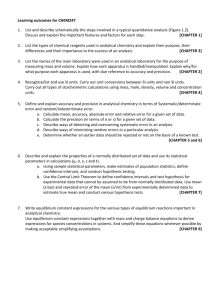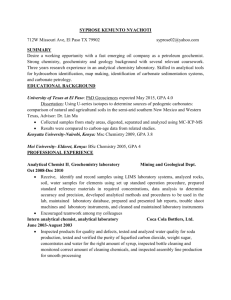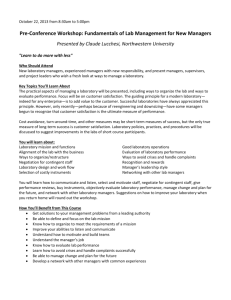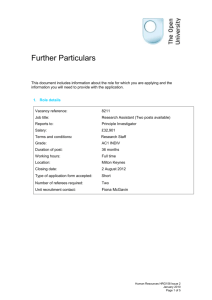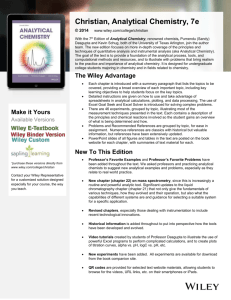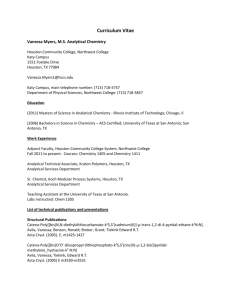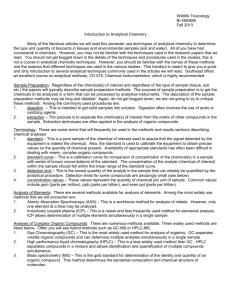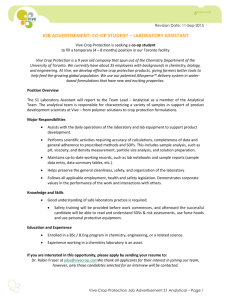WP 3: Phytochemical characterisation of active materials
advertisement
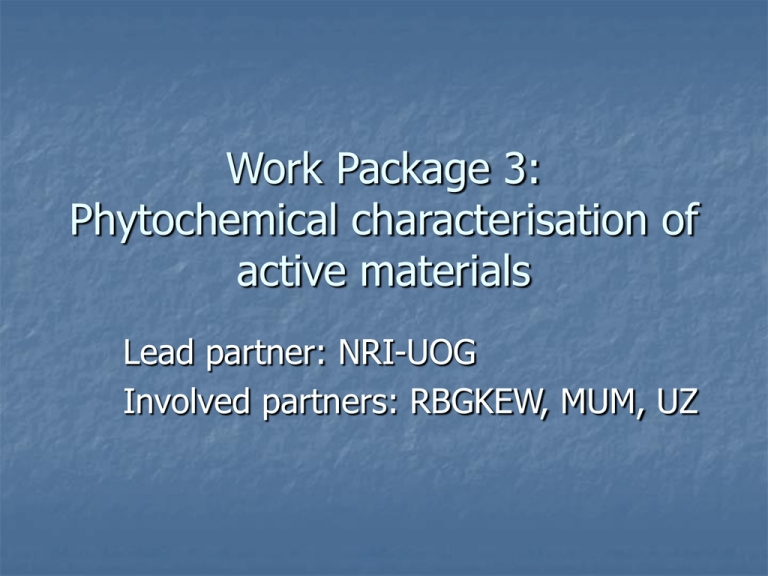
Work Package 3: Phytochemical characterisation of active materials Lead partner: NRI-UOG Involved partners: RBGKEW, MUM, UZ Justification Use of plants as pesticides established & effective for crop, storage protection, livestock treatment. So why the need for chemistry? Requires expensive equipment Time consuming Justification - scientific Pesticidal plant use improved via understanding the chemistry that governs activity e.g., enhancing application methods improving harvesting strategies - less long term damage correct time of year correct part of plant identifying alternatives species for scarce or threatened ones water soluble components applied as water extracts reducing amounts needed some plants are effective & popular but over-harvested abundant plants with similar chemistry environmentally benign alternative Authentication & validation Identification of toxins Justification - institutional The ability of SADC partners to carry out this analytical work is presently limited capacity needs to be built. This WP will incorporate significant training component analytical and preparative techniques bioassays techniques Objectives WP3 Chemical profiling of at least 10 pesticidal plants - selection based on information arising from WP2 through literature surveys. from published indigenous use in pest control. information obtained from farmers plants that farmers demonstrate to be effective Plants used in other places but not in our region. Objectives WP3 Identification of key bioactive components Use literature & chemical database compound searches Chemical analysis using LC-MS / GC-MS / NMR Compound purification Biological activity testing of processed materials, extracts & pure compounds to verify activity Optimise approaches to harvesting e.g., Securidaca longepedunculata Roots vs. bark Water extract vs. powdered root/bark. Ensure correct ID of species Cissus populnea vs. Cassia sophera Objectives WP3 Capacity building through staff exchange & training of SADC scientists (Mzuzu University & University of Zimbabwe) in UK labs at NRI-UOG and RBG-Kew through formal training – PhD? to develop appropriate analytical techniques for technology available in SADC. Outputs At least 3 peer reviewed papers. Training document for rapid and straightforward chemical analysis of plant materials Specifically plants for which info is collected within the project. More general techniques specific to biological activity testing Provision of standard texts e.g., Phytochemical methods Methods to be relevant. Where & How? RBG-Kew NRI-UOG can provide analytical chemistry GC-MS, LC-MS, NMR compounds isolation biological activity testing Stored product pests e.g., Callosobruchus & Sitophilus spp. Field crop pests e.g., Bemisia & Spodoptera spp. Invertebrate & unicellular parasites? Needs to be prioritised – what are the most important and relevant tests Mzuzu University & University of Zimbabwe Analytical plant chemistry – HPLC. Biological activity testing Capacity building and training Questions for discussion Training – who & how? Who works on which plants? Divided up by plants species or use? Material Transfer – access to plants. Biological activity testing. Who runs which bioassays? Which organisms? Where to get livestock parasite bioassays done

